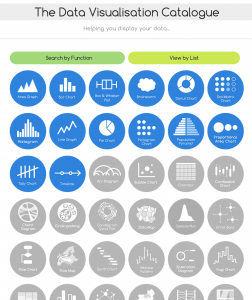Imagine an experience full of helpful information to solve people’s problems without relying just on sales techniques.
Pay-Per-Click (PPC) and interactive content can be strong allies. Your company can bring more Marketing Qualified Leads (MQLs) and more revenue through a richer experience in your ad campaigns.
Many enterprises are trading regular, static landing pages for amazing interactive experiences that engage visitors on a whole new level.
As a specialist in interactive content solutions, Rock Content understands first-hand how the content experience era is helping marketers to achieve better results with the customer journey.
We are also going to discuss how to optimize Facebook Ads, LinkedIn Ads, Google Ads, and native ads. Aligning your ads efforts with interactive content, your sales team can collect first-party data and develop a more tailored approach during negotiations.
What Is Interactive Content
Interactive content is dynamic materials that encourage user participation by offering different paths that the user can follow according to their preferences or desires.
With such an abundance of content available online, the more engaging and interesting your content, the more interaction and conversions you’ll receive.
Have you ever taken a quiz online or come across a hot site full of buttons and spaces for you to put information? These are just two examples of interactive content.
But there’s much more. Some types of interactive content can include:
- Quizzes
- Calculators
- Animated eBooks
- Infographics
- Clickable White Papers
- Questionnaires
- Polls
- Resource Libraries
- Videos
- Maps
- Interactive Landing Pages
Interactive content allows you to get more feedback from your users as it pulls important consumer data during content consumption, a bonus for your content team and your sales team.
What’s the Buyer’s Journey and Why is it Important to Content?
The buyer’s journey refers to the process, interactions and experiences your potential customers experience leading up to a purchase of your products or services.
The buyer’s journey is the path that leads a prospective customer to make a purchase.
These steps include:
- Awareness: The prospect is aware of their problem and needs solutions. Example: if you are a company that sells inventory control software, you can create content like “Tips on how to organize your company’s inventory”.
- Consideration: The prospect is researching ways to fix their challenge. Example: a store owner identifies a problem in inventory control and needs a solution. They start looking for content like “How to calculate the ideal stock for your company”.
- Decision: The customer has enough information to make a well-informed decision. Example: a store owner decided they needed software to control the inventory and start looking for options. They start comparing products. It’s the perfect time to offer comparison articles and even a free trial of your product.
Your priority is to ensure that you have tailored content for each persona at each stage of the journey.
If you want to buy a new software, for example, you don’t want to know just the price. You’d like to know about the benefits, see reviews, or compare with other solutions.
Your content works in the same way.
A person in the awareness stage isn’t ready for a pricing calculator, and a prospect in the decision stage doesn’t need articles about general industry trends.
The Importance of Context in Delivering Persona Needs
Adding interactive content to your PPC strategy seems like a match made in heaven.
If you can drive more engagement in your ads and entertain your prospects at the same time, you have much more chances of success.
However, marketers need to use best practices to improve ads while using interactive content. If it’s obtrusive or located in the wrong place, you can still lose potential clicks.
Native advertising is a great example of an immersive experience that doesn’t interrupt or irritate your audience. It can be published on websites using specific platforms for posting native ads on large portals, such as Taboola and Outbrain. With native posts on social media feeds, marketers can post an ad that looks just like a regular user post.
In addition to matching the tone and appearance of content, native ads aren’t a hard sell of your products or services, but rather a chance to raise brand awareness, impressions, and website traffic while capturing user information.
Examples of native ads can include helpful articles or listicles that are sponsored by your company; in-feed content; or content recommendations.
On the other hand, using interactive content, such as quizzes, calculators or assessments allows you to capture first-party data smoothly.
Imagine reading an article about how to set your lead goals, you might be interested in clicking on the related content “Lead Generation Goal Calculator”?
Expand Your Content Reach and Save Money
Not only does interactive content have the potential to deliver the right message to your audience, but it also has a higher chance of being shared and liked on social media platforms. It helps you, especially in the awareness and consideration phases.
When structuring your PPC campaigns, you segment social ads by your personas. You also use lookalikes and remarketing to impact people that already visited your site. The truth: you and most of your competitors are using similar strategies.
People are affected by an assortment of advertisements and messages every day. With quizzes and calculators, they become even more engaged.
When prospects find the content useful, they are more likely to share it to help their friends. With more shares, the reach of your content expands without having to pay more.
For example, this campaign from tequila maker Patrón was created for International Margarita Day. On Twitter, they promoted margarita recipes and asked the audience to vote. As a result, people shared, liked, commented, and interacted with the brand.
Setting up your ads to get the best out of Interactive Content
How can you perfectly match interactive content and PPC?
This starts with targeting and the buyers’ journey.
- Awareness phase: Help prospects understand their problems. Segment your ads by your persona or buyer’s lookalikes in Facebook Ads or LinkedIn Ads. During this phase, interactive content makes the experience of knowing your brand more alive.
- Consideration phase: Remarketing helps you re-engage the people who just met your brand. Introduce these people to your solutions. Interactive experiences help your prospects to find a personalized solution that best solves their problems – and you get leads.
- Decision phase: Remarketing is also a great strategy here. You have, in general, the prospect’s contacts. So you can segment Facebook and LinkedIn to show ads just for people who visited some important content that you sent by email, for example.
Get Your Users Interacting Right Off The Bat With Facebook Ads
Making sure that your landing page is aligned with your creatives is vital when setting up your ads. This is how you can create conversion campaigns on Facebook and Instagram that engage your audience right away and seamlessly lead them to your content experience.
Carousel Ads
Carousel ads can be used to introduce the interactive experience. A CTA in the last card can direct the user to continue the experience. Set “Conversions” as your campaign objective, so you can track the results and optimize your ads in the future.
Introducing your experience through a carousel can give your prospects a better idea of what they can expect on your page – and improve clicks.
Poll Ads
Poll ads can kickstart user interaction to continue on your content experience. Use “Conversions” as your campaign objective.
You are gonna direct your prospects to the experience after answering the pool. Then, you can put into practice the power of the Endowed Progress theory which says that people tend to continue working towards a goal they have already started acting towards.
LinkedIn Ads & Interactive Content: Generating Quality Leads
LinkedIn feed ads are similar to Facebook feed ads, so the interactive content promotion strategy there will have a similar approach.
The most significant difference in LinkedIn is the ability to use conversational ads. You can send an offer directly into your prospects’ inboxes. It’s great especially if you’re a B2B company and aim for more quality than volume.
Take this Rock Content campaign as an example. We created an interactive experience to help marketers with their ABM strategies. The number of MQLs generated surpassed our expectations.
To reach our target audience, we created a personalized audience on LinkedIn looking for marketing managers, a targeting function that is a LinkedIn differentiator. Then, we promoted an advertisement linking to our interactive experience.
It’s hard for our persona to not interact with this ad. We deliver exactly what they seek, directly to their inboxes. So, the user informs his challenges in the ABM strategy; we then send him a custom plan based on the responses; finally, we get leads.
Using URL Parameters to customize your Interactive Experience
Another way of matching PPC and interactive content is customizing what they see by what you know about visitors. With the tool, you can adapt the page to show different content to different users depending on geographic location, searched terms, and many other conditions.
That means you can create a PPC campaign for users in a country and show a tailor-made landing experience depending on the state they are accessing from, for example.
Or, using Google Ads, adapt your headlines due to the search terms on Google. For that, use URL parameters through ValueTrack Parameters.
Interactive Content and Conversion Rate Optimization (CRO)
Getting clicks on your ads is one thing; converting on your landing page is another. Conversion Rate Optimization (CRO) is an ongoing process: your work is never done, but you improve it along the time through data.
A good interactive content platform provides the ability to do A/B testing. So, you can find the best-performing version of your content improving many variables, such as buttons, texts, and images.
[ion_script src=”https://ionfiles.scribblecdn.net/scripts/ionizer-1.4.2.min.js” hash=”eyJ1cmwiOiIvL2ludGVyYWN0aXZlLnJvY2tjb250ZW50LmNvbS9lbi9ibG9nL2FidGVzdD9faW9uX3RhcmdldD1lbWJlZC0xLjAiLCJpZCI6Il9pb25faW9uaXplcl8xNjk3NDg2NTg3MjcwIiwiZnVsbFNjcmVlbiI6ZmFsc2V9″]
Real-World Examples of CRO
To boost the performance of your ad, you need to increase the conversion rate on your landing page. The bigger percentage of visitors that take the desired action on your site, the better.
If you use a well-constructed interactive landing page, you can tag all visitor behaviors: buttons clicked, sections accessed, quiz or form answered, etc.
This data can help you with remarketing campaigns and with powerful insights that can drive up your conversion rate.
Examples
Rock Content has a robust content experience platform, Ion. We have more than 2,000 customers, including enterprise-level brands such LinkedIn, Dell, Spotify, Oracle, DHL, and Salesforce.
Below are some examples of how companies using Ion succeeded. Unfortunately, because of the sensitive nature of the information, we have non-disclosure agreements (NDA) and cannot show the names of the brands.
A company wanted to reduce its cost-per-lead on PPC campaigns and improve its conversion rates. We helped them save over US $100,000 per year and increase their ROI by 291%.
This was accomplished when we created 330 highly-targeted landing pages for their ads and used A/B testing to compare the performance of different visual and copy elements for each page.
A massive number of landing pages wasn’t the only solution, however.
Another customer with the same problem only created four campaign-specific landing pages but used A/B testing to identify if a single landing page or a more complex conversion path would be better. They increased their conversion rates by 280%.
And a third customer saw a 22% improvement on their Google Ads quality score. We focused on mobile-specific AdWord campaigns and landing pages. The conversion rate increased 40% and the cost-per-conversion decreased 51%.
Keep Delivering Value with Your Ads
Marketing is all about delivering more value to your audience and customers by helping them solve problems.
You can do that with interactive content, which gives your leads and prospects more engaging material that addresses the specific concerns they face at each stage of the buyer’s journey.
By combining interactive content and ad campaigns, you get the best of both worlds with engaging content that has more potential to delight your audiences and to increase your conversion rates and sales.
If you want to stay on top of all the PPC trends for the next year, we highly recommend that you download the free Search Engine Journal ebook PPC Trends 2024.
Transform your content into captivating experiences! With ION, you’re not just creating content – you’re building interactive journeys. Elevate your engagement, capture valuable data, and drive conversions. Ready to revolutionize your content marketing? Dive into the world of interactive possibilities with ION now!
Get Started with ION Today!
Start creating interactive content with Ion and increase your marketing results!
Start creating interactive content with Ion and increase your marketing results!








